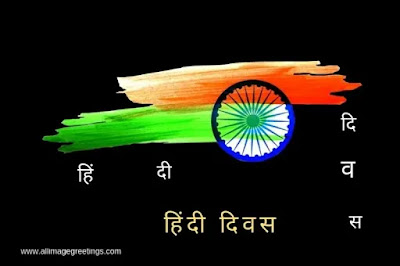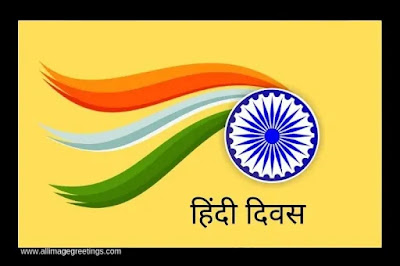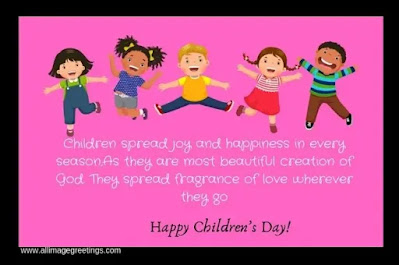WORLD HINDI DAY 2023
Hindi is apparently the fourth most spoken language all over the world and is vastly spoken in India. It’s also one of our official languages other than English. On this World Hindi Day, make it a point to represent this soulful language across the globe gracefully.
If you stay in India, you most probably know Hindi. And in case you don’t, you must have heard it by now in Hindi movies or in Hindi news channels, etc. We are practically surrounded by this language.
HINDI
The Hindi language is a member of the Indo-Aryan group within the Indo-Iranian branch of the Indo-European language family. It is one of the official languages of India, although much national business is also done in English as well as the other languages of different communities and regions in the Indian constitution.
In India, Hindi is the first language of nearly 425 million people and the second language of some 120 million more. Significant Hindi speech communities can also be located in South Africa, Mauritius, Bangladesh, Yemen, and Uganda.
Literary Hindi, written in the Devanagari script, has been strongly influenced by Sanskrit and its standard form is based on the Khari Boli dialect, found in the north and east of Delhi.
Braj Bhasha, which was an important literary medium around 15th to 19th century, is often treated as a dialect of Hindi, along with Awadhi, Bagheli, Bhojpuri, Bundeli, Chhattisgarhi, Garhwali, Haryanavi, Kanauji, Kumayuni, Magahi, and Marwari.
However, these so-called dialects are more accurately described as regional languages of the “Hindi zone” or “belt". The Hindi Belt or Hindi Heartland or Hindi Patti is a linguistic region including parts of northern, central, eastern, and western India where Hindi language (and the various languages/dialects grouped under it) is widely spoken.
Within this zone, the degree of resemblance of these regional languages to standard Hindi varies considerably. Maithili which is the easternmost regional language of the Hindi belt evidently bears more historical resemblance to Bengali than to standard Hindi.
Likewise, Rajasthani, which is the westernmost language of the belt, resembles Gujarati more than standard Hindi to some extent.
Nevertheless, most speakers of these regional languages consider themselves to be speaking a Hindi dialect. Among other reasons, these languages were grouped with Hindi by the British in an attempt to classify languages during the early days of the British rule.
Besides, Hindi (rather than one of the regional languages) was chosen as a medium of instruction at the elementary-school level. In large part as a result of this colonial policy,
members of the urban middle class and educated villagers throughout the zone claim to be speakers of Hindi because the use of these regional languages or dialects in public venues was perceived as a sign of inadequate education—that is, outside the circle of family and close friends.
That is to say, speaking standard Hindi gives as much status to people in this region as speaking English gives in the south of India; both are treated as languages of upward social mobility. Thus, people looking for new jobs, marriages, and the like needed to use standard Hindi in day-to-day communication.
This is why young people now have only a passive knowledge of regional languages. Especially, since the 1950s, the prevalence of mass media (radio, television, and films) and growing literacy was followed by an increase in the number of native speakers of standard Hindi.
From time to time, there were demands for the formation of separate states for the speakers of one or another regional language. Such demands were generally neutralized by other counter-demands for the recognition of that regional language’s many dialects. For instance.
when the demand for the formation of a separate state of Maithili speakers was demanded in Bihar in the 1960s and 1970s, the counter-demand for the recognition of Angika in eastern Bihar and Bajjika in northwestern Bihar was also raised simultaneously.
The successful demands of forming the new states of Chhattisgarh (from territory once in Madhya Pradesh) and Uttaranchal (from territory in Uttar Pradesh) were more sociopolitical than linguistic, and were ultimately provided.
Here, we are providing you with a chart showing countries where this language is spoken along with some other detailed information.
Countries
|
Official language
|
Other languages
|
Major Ethnic Groups/Religion
|
India
|
Hindi, English
|
Assamese, Bengali,
Bodo, Dogri, Gujarati, Hindi, Kannada, Kashmiri, Konkani, Maithili, Malayalam, Manipuri, Marathi, Nepali, Oriya, Punjabi, Sanskrit, Santali, Sindhi, Tamil, Telugu, Urdu |
Hindu, Muslim,
Christian, Sikism |
Nepal
|
Nepali
|
Nepali, Maithili, Bhojpuri,
Tharu, Tamang, Nepal Bhasa, Hindi |
Nepali,
Nepalese, Gurkhas |
Fiji
|
English, Fijian, Fiji Hindi
|
Nadroga
|
Melanesians,
Polynesian, Indo-Fijians |
Pakistan
|
English, Urdu
|
Punjabi, Hindi,
Sindhi, Pashto, Balochi, Saraiki, Hindko, Brahui |
Punjabi, Pashtuns,
Sindhis, Seraikis, Muhajirs, Balochs |
Trinidad and Tobago
|
English
|
Spanish, French,
Hindi, Bhoipuri |
East Indian,
Afro Trinbagonian |
Bangladesh
|
Bangla (Bengali)
|
English, Hindi,
Indigenous minority languages |
Bengali
|
Singapore
|
English, Malay
|
Tamil, Hindi,
Mandarin |
South Indians,
Buddhistsm Taoists, Christian |
South Africa
|
Afrikaans, English
|
Southern Ndebele,
Northern Sotho, Southern Sotho, Hindi, Swazi, Tsonga, Tswana, Venda, Xhosa, Zulu |
Christians ,
Indians, Anglican, Dutch Reformed |
There are millions of Hindi speakers, who are settled in different countries including the USA, UK, and Gulf countries.
Interesting facts related to Hindi
Hindi is one of the legit languages of India. Hindi stands as the fourth most spoken language in the world. Hindi has been given the status of official language in the Pacific island country of Fiji. Hindi itself is a Persian language word. Hindi is taught as a subject in 176 universities in the world.
Some Notable events
Other than some local-level events in schools and other institutions, a few of the notable events include- The former President of India, Pranab Mukherjee had given awards in different categories for excellence in different branches of Hindi at a function in Vigyan Bhawan in New Delhi.
Rajbhasha Awards were presented to the Ministries, Departments, PSUs, and Nationalised Banks.
Ministry of Home Affairs in its order dated 25 March 2015 has modified the name of two awards given every year on Hindi Divas. 'Indira Gandhi Rajbhasha Puraskar' instituted in 1986 replaced with 'Rajbhasha Kirti Puraskar' and 'Rajiv Gandhi Rashtriya Gyan-Vigyan Maulik Pustak Lekhan Puraskar' replaced with "Rajbhasha Gaurav Puraskar".
VISHWA HINDI DIWAS
10 things related to Vishwa Hindi Diwas or The World Hindi Day
1. The first World Hindi Conference was organized in Nagpur on 10 January 1975 to promote Hindi (Hindi) worldwide. Therefore, this day is celebrated as World Hindi Day. 122 delegates from 30 countries attended this conference. Every year since 2006, World Hindi Day is celebrated worldwide on 10 January.
2. Former Prime Minister Dr. Manmohan Singh announced to celebrate World Hindi Day every year on 10 January 2006.
3. Indian embassies abroad organize special events on the occasion of World Hindi Day. Programs in Hindi on various subjects are organized in all government offices.
4. Indian Embassy celebrated the first World Hindi Day in Norway. After this, the second and third World Hindi Day was celebrated with great pomp under the chairmanship of the author Suresh Chandra Shukla under the auspices of the Norwegian Information and Cultural Forum.
5. In addition to World Hindi Day, 'Hindi Day' is celebrated on 14 September every year. On 14 September 1949, the Constituent Assembly gave Hindi the status of an official language, since then Hindi Day is celebrated on 14 September.
6. Hindi is now taught in hundreds of universities of the world and crores of people speak Hindi all over the world. Not only this, but Hindi is also one of the most widely spoken languages worldwide.
7. There is an island named Fiji in Melanesia in the South Pacific Ocean. In Fiji, Hindi has been given the status of the half-official language. It is also called Fijian Hindi or Fijian Hindustani. It is a mixed form of Awadhi, Bhojpuri and other dialects.
8. Hindi is spoken in many countries including Pakistan, Nepal, Bangladesh, USA, UK, Germany, New Zealand, United Arab Emirates, Uganda, Guyana, Suriname, Trinidad, Mauritius, and South Africa.
9. In the year 2017, for the first time in the Oxford dictionary, Hindi words like 'good', 'big day', 'child', and 'Surya Namaskar' were included.
10. According to the calculation of the World Economic Forum, Hindi is one of the ten powerful languages of the world.
INTERNATIONAL HINDI DAY
The first World Hindi Conference was held in Nagpur on January 10, 1975. The aim being, promoting the language of the nation worldwide. 122 representatives from 30 countries participated in that conference.
'Hindi Day' is observed on 14th September every year. The beginning of this celebration dates back to September 14, 1949, when Hindi was given the status of official language by the Constituent Assembly.
An important point to remember is that World Hindi Day is the promotion of the language at global space, whereas, National Hindi Divas is observed across the country at a national level to mark the adaptation of Hindi, written in Devanagari script as the Official Language of the Union by the Constituent Assembly on 14 September 1949.
Hindi stands fourth among the most spoken language of the world. It is the mother tongue of around 258 million people across the globe. The provision of Hindi being the official language of the Union has been mentioned in Article 120, Article 210 and Article 343, 344, and from 348 to 351.
WORLD HINDI DIWAS
Hindi Divas is acknowledged on 14 September, to commemorate the adoption of Hindi written in Devanagari script as one of the two official languages of the Republic of India by Constituent Assembly of India.
To this end, many people rallied and lobbied pan-India in support of Hindi, Beohar Rajendra Simha along with Hazari Prasad Dwivedi, Kaka Kalelkar, Maithili Sharan Gupt, and Seth Govind Das. The efforts came to fruition following the adoption of Hindi as an official language, on the 50th birthday of Beohar Rajendra Simha on 14 September 1949.
WORLD HINDI DAY DATE
10th January is the official date on which World Hindi Day is observed. On this occasion, the Union Ministry of External Affairs (MEA) hosts and conducts various special programs to promote through its missions abroad.
The day is celebrated by non-residential Indians and Persons of Indian Origin by organizing events. The reason for this celebration is to spread the greatness of the Hindi language.
Former Prime Minister Dr. Manmohan Singh commenced this celebration on January 10th, 2006 and since then, World Hindi Day is celebrated on 10th January every year.
WORLD HINDI DAY IS CELEBRATED ON
World Hindi Day is celebrated on the 10th of January every year.
WHY WORLD HINDI DAY IS CELEBRATED EVERY YEAR ON 10th JANUARY
World Hindi Day is observed on January 10th every year, which marks the anniversary of the first World Hindi Conference which was held in 1975 by Indira Gandhi, who was the prime minister then.
To date, the World Hindi Conference has been organized in different countries like India, Mauritius, United Kingdom, Trinidad, and Tobago, and the United States.
HOW IT IS DIFFERENT FROM HINDI DIWAS
World Hindi Day and National Hindi Diwas are celebrated on different days and also have separate reasons for celebration. National Hindi Diwas is observed every year on September 14.
On this particular day in 1949, the constituent assembly adopted Hindi, as the official language of the Union. National Hindi Diwas is held across the country at a national level, marking the adaptation of Hindi, written in the Devanagari script as the official language.
Whereas the primary reason for the World Hindi Day, which is celebrated on the 10th of January, is to promote the language at a global level.
Hey! Thank you for visiting our page! Hope you’ve liked our work. We are here to help you out in whatever way we can. Check out other posts and learn and share. We are providing free content related to World Hindi Day. Here are some other topics to take a look, Vishwa Hindi Diwas, International Hindi Day, World Hindi Diwas, World Hindi Day-Date, World Hindi Day Is Celebrated On, Why World Hindi Day Is Celebrated Every Year On 10th January, How It Is Different from Hindi Diwas
Regards,
allimagegreetings.com team.
Tags:
Special Days







.jpg)


